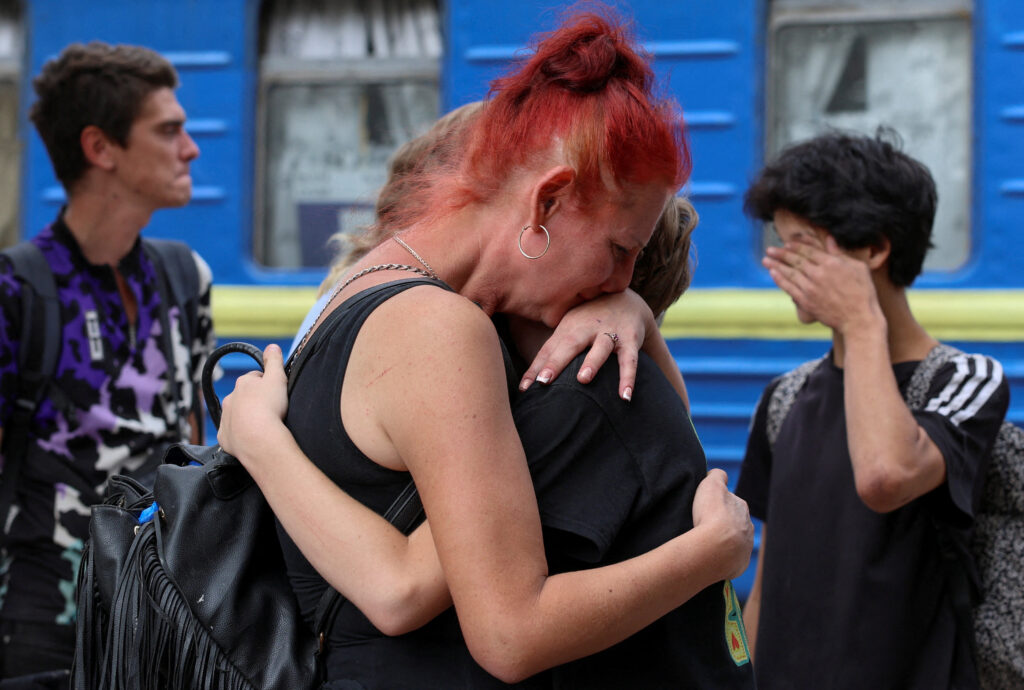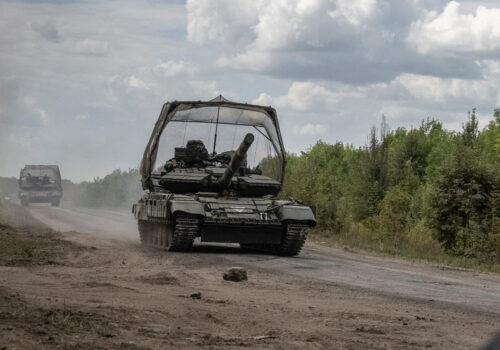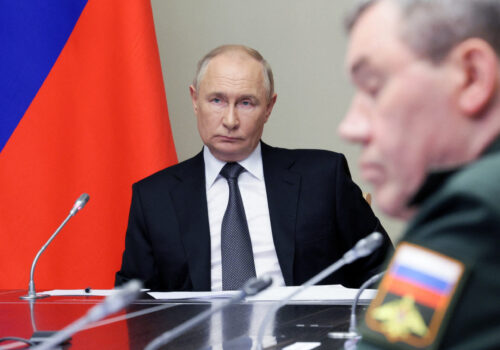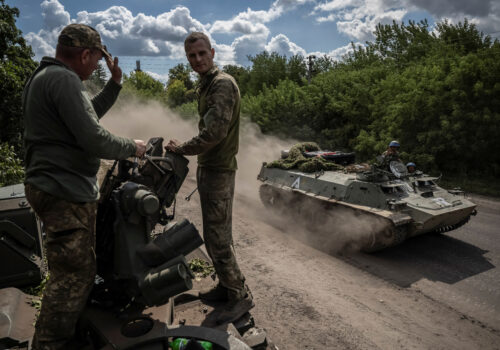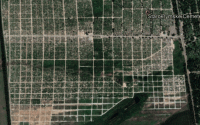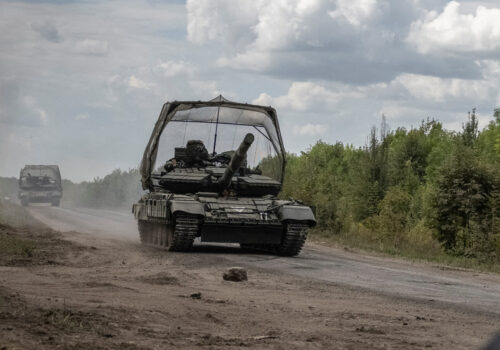
Key Ukrainian front line city evacuates as Russian offensive gains pace
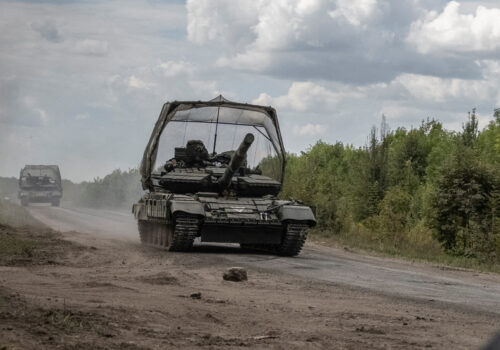
Evacuation efforts are currently accelerating in eastern Ukraine’s Pokrovsk as the Russian military draws closer. Residents are fleeing amid fears their hometown will soon become the latest in a growing list of Ukrainian cities reduced to rubble by Putin’s invading army.
Pokrovsk has long been an important Russian objective. Located on a crucial road connecting eastern Ukraine’s Donetsk province with neighboring Dnipro region, the city serves as a key logistical hub for the Ukrainian military. Russian troops have been steadily moving toward Pokrovsk for some months as Vladimir Putin seeks to consolidate his grip on the surrounding area. If the strategically important city falls, it will undermine Ukraine’s defenses while potentially serving as a gateway for further Russian gains.
Ukraine’s leaders are well aware of the stakes but have so far been unable to stop the Russian offensive. There has been considerable speculation that the recent Ukrainian incursion into Russia’s Kursk region was primarily intended to ease the pressure on Pokrovsk by forcing the Kremlin to redeploy forces. If this was the plan, it has not yet succeeded. Instead, the Russian army appears to be concentrating more troops for the push toward Pokrovsk, and is advancing with increasing speed.
Stay updated
As the world watches the Russian invasion of Ukraine unfold, UkraineAlert delivers the best Atlantic Council expert insight and analysis on Ukraine twice a week directly to your inbox.
With the front lines of the war now less than ten kilometers from the city, Pokrovsk residents find themselves confronted by the same nightmare scenarios and impossible choices experienced by huge numbers of Ukrainians since the onset of Russia’s full-scale invasion two and a half years ago. The mandatory evacuation of families with children has been ordered, while a twenty-hour daily curfew has been imposed. Leaving Pokrovsk means abandoning homes, possessions, family members, and all that is familiar. Staying may well prove deadly.
Prior to the war, Pokrovsk had a population of around sixty thousand. By the final week of August, this figure had dropped to approximately half the prewar total. Thousands continue to leave every day. The roads out of Pokrovsk are jammed with cars loaded up to the roof as families evacuate with whatever they can carry. Local institutions such as hospitals and banks are shutting down and preparing to close. Those who have yet to join the exodus are stockpiling water, groceries, and humanitarian aid, while bracing for the worst.
The process of leaving Pokrovsk can be fraught with danger. Evacuation teams try to keep civilian cars on established routes in a bid to maintain a degree of security, but reports of Russian drone and bombing attacks are growing. The thunder of artillery fire in the distance adds to the sense of urgency and uncertainty.
In the city itself, it is possible to encounter extremes of distress, despair, courage, and compassion at virtually every turn. On Samarska Street, half the houses now stand empty. When I visited, one elderly lady was in the process of locking up her home while a car packed with her worldly belongings waited outside. There were also signs of daily life as remaining residents bicycled past to get water from a nearby pipe or visit the local store. Some of those leaving remained defiant, insisting their departure was just a temporary measure. Others claimed they would stay and placed their hopes in Ukraine’s ability to defend the city.
Eurasia Center events
Ukrainian and international volunteers are providing vital support for those seeking to evacuate, especially vulnerable groups such as women, children, and the elderly. These volunteers in many ways capture the indomitable spirit of wartime Ukraine and the sense of solidarity that has enabled the country to keep functioning despite the stunning violence and trauma of Russia’s invasion.
Pokrovsk railway station is one of the busiest places in the city, buzzing with activity and emotion as people wait to board evacuation trains. Railway workers wearing body armor guide passengers to different carriages based on their final destinations throughout Ukraine.
Some are preparing to go further and plan cross the border into the EU. One evacuee, who was traveling with her two children, told me she was heading to Germany and did not know what the future would hold. She was leaving Pokrovsk without her mother and grandmother, who insisted on remaining in their family home despite the rapidly approaching danger.
The harrowing and heroic scenes that are currently unfolding in Pokrovsk have already been replayed in countless Ukrainian towns and cities since February 2022. Every time the Russian army advances, ordinary Ukrainians find themselves forced to make life-changing decisions in incredibly stressful circumstances, often while having to rely on the kindness of strangers in order to survive.
This barely imaginable reality has now reached Pokrovsk. As the city prepares for the anticipated Russian onslaught, local residents are displaying the kind of remarkable resilience that has become a symbol of life in wartime Ukraine. Their desperate plight is a reminder that unless Russia is stopped, millions more will face a similar fate.
Maria Avdeeva is a Kharkiv-based Ukrainian security analyst and strategic communication expert.
Further reading
The views expressed in UkraineAlert are solely those of the authors and do not necessarily reflect the views of the Atlantic Council, its staff, or its supporters.

The Eurasia Center’s mission is to enhance transatlantic cooperation in promoting stability, democratic values and prosperity in Eurasia, from Eastern Europe and Turkey in the West to the Caucasus, Russia and Central Asia in the East.
Follow us on social media
and support our work
Image: A woman embraces her relatives before they board an evacuation train to Western Ukraine, amid Russia’s attack on Ukraine, at a railway station in Pokrovsk, Donetsk region, Ukraine. August 30, 2024. (Radio Free Europe/Radio Liberty/Serhii Nuzhnenko via REUTERS)
